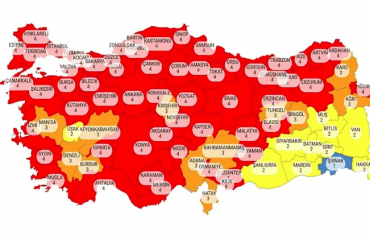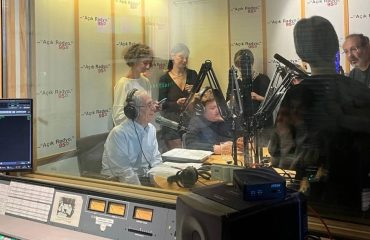

2021 Turkish export figures indicate that the share of high technology products in exports has dropped from 4 percent to 3 percent. We export more kilograms of goods but we earn less in dollars because the goods we export are not high value added products. Many people consider digital transformation as the remedy: They plan to replace workers with robots, increase productivity and increase exports. What difference will this make? Textiles are low technology products; no matter how they are produced. The trick is in producing the digital technology or the high value added digital product.
Why can’t we produce high value added digital products?
Let us turn our attention to those who can: Late 70’s and early 80’s in the UK: ARM is a small digital design company; designing the processing units in computer chips. 40 years later, there are 200 billion ARM cores in the world; more than 25 cores for each person in the world. They are in our computers, in our cell phones, in our cars, appliances, in our computing infrastructure. An incredible number. The company is worth 40 billion dollars.
What kind of a company is ARM? Does it have manufacturing plants? No. Does it use precious metals or strategically important semifinished products that are difficult to supply? No. Then, what does it use? Highly skilled, educated workforce. Intellectual property. One of ARM’s inventors, Sophie Wilson, was a student of mathematics and computer science at Cambridge University in the 70’s. She was known as Roger Wilson at the time. In 1994, she underwent gender reassignment and took the name Sophie. She is known as the inventor of ARM microprocessors. She is a highly respected member of society, with many awards. She describes how she designed the instruction set architecture in ARM. She says she still runs the code in her head. An incredible genius.
The same years, in Turkey
I was a student of Electronics Engineering in the early 80’s. There were bright innovators in my class, too. They too designed electronic products based on microprocessors. Although some became successful, that sector did not grow much. Why? If I tell the story of one classmate, you may get an idea.
In the 1990’s, textiles were the main export products in Turkey. My classmate, Murat Taşman set out to modernize the family business in Bursa. He was doing digital transformation, in today’s terms.
The classical Jacquard loom was an interesting machine: It had an analog program punched into continuous cards, resting above the loom. A mechanical contraption pulled the warp threads up if there was a hole in the card; enabling the shuttle carrying the weft to pass under the warp. The pattern punched in the card thus created the pattern.
When the designer created a textile design, this was transferred into punched cards manually. After the cards were punched, proofing by production and re-punching was often necessary. It was a slow, error-prone and prolonged process with many stages. In 1993, Murat Taşman developed a machine that digitized the pattern and produced the punched cards automatically. Their production had become faster and more flexible; increasing productivity, without investment into new looms.
I was fascinated by his invention, but had difficulty understanding why he went back to textile production after modernizing his own looms. Why not go on to electronic loom production? There was a master loom manufacturer in Gaziantep, who could produce the mechanical parts; and he had the expertise to develop the electronic parts. They could pair up and produce local electronic looms. What a good business idea! Apparently not.
German-made modern looms cost a few hundred thousand marks at the time, and the Turkish state was supplying cheap credit in an effort to support exports. Textile manufacturers were buying tens of those looms. Most were idle; but it was good investment, especially if somebody else was financing it. Who would buy cheap Made in Gaziantep looms under these circumstances?
Highly skilled, educated workforce for high technology
However, textiles are low technology; weaving looms are medium level technology, and electronic systems are high technology products. We invested in low technology for years. We could have continued supporting textile production but encouraged its digital transformation by local suppliers. Technology production relies on an ecosystem. We could have nurtured that ecosystem slowly by supporting local digital technology suppliers. Of course, the only deficiency is not foresight. One needs strong legal infrastructure to ensure an environment of competition. And of course, highly skilled, educated workforce.
30 years have gone by; we may be in a better position. We have a young, educated population. We have good examples in the software sector. However, successful software companies try to incorporate in the US or in Europe and assemble teams there because they do not trust the competitive environment here. Coders want to go abroad using the first chance they get. I have written about the underlying reasons: Quality of life, freedom of expression, respect for human rights. If Sophie Wilson was born in this country, she would run for her life. Young people suffer maltreatments and oppressions and leave the country. We are losing our young, educated people.


